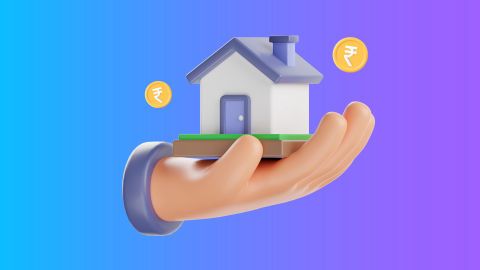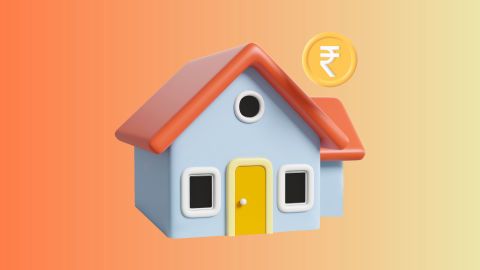In various fields, particularly in construction and engineering, understanding measurements is crucial. One common conversion people encounter is converting millimeter to square meter. Millimetres are typically used for smaller, precise dimensions, while square metres provide a broader perspective for area calculations. Converting millimeter to square meter is essential when scaling up from detailed plans to real-world applications. This article serves as your comprehensive guide on how to perform this conversion accurately and efficiently.
Whether you’re an architect planning a new structure or a homeowner looking to maximise your property’s potential, knowing how to make this conversion is essential. In addition to area conversion, if you’re considering expanding your property or investing in real estate, you might also want to explore a Loan Against Property. This loan can help you finance your projects effectively. Alongside, you can use the area conversion calculator for quick and reliable conversions. Let’s dive into the details and simplify the process of converting mm to sq meter.
Buying or selling property? Accurate area measurement in sq meters is key, but so is funding flexibility. A loan against property can provide large loan amounts based on your property’s value, helping you invest or reinvest in real estate with ease. Leverage the power of your property to fulfil multiple financial needs. Get a loan against property with simple application process.
What is MM?
What is millimeter (mm)?
Millimetre (mm) is a unit of length in the metric system, symbolising one-thousandth of a metre. It is widely used in various fields, including engineering, manufacturing, and everyday applications, where precision is vital. For instance, if you’re measuring the thickness of a sheet of paper, you would use millimetres to ensure accuracy. In construction, millimetres are used to determine small dimensions, such as the width of beams or the spacing of fixtures. Understanding this unit is critical, especially when you are working with larger areas, as precise measurements can significantly impact your project.
History of millimeter
The millimeter, a unit of length in the metric system, originated from the meter, which was established during the French Revolution in the 1790s. Defined originally as one ten-millionth of the distance from the equator to the North Pole, the meter became the foundation for all metric units. The millimeter (one-thousandth of a meter) was later introduced to allow for greater precision in measurement. It gained widespread use in science, engineering, and everyday measurements, especially in countries that adopted the metric system. Today, the millimeter is a standard unit of measurement in most parts of the world, excluding a few nations.
Millimeter to other conversion units
Millimeter is a versatile unit of length and can be easily converted to other units like centimeters, meters, inches, and feet for accurate measurements across various applications.
Units |
Conversion |
1 MM |
1000 Micrometer |
1 MM |
0.1 Centimeter |
1 MM |
0.001 Meter |
1 MM |
0.00109 Yard |
1 MM |
0.0032 Foot |
What is Square Meter?
A square metre (sq meter) is a unit of area measurement in the metric system, equivalent to a square that is one metre long on each side. It is commonly used to quantify larger spaces, such as rooms, land, and buildings. Knowing the area in square metres is essential for property valuation, construction projects, and real estate transactions. For example, when buying or selling a house, the total area of the property is often measured in square metres. This measurement allows for a clear understanding of the space available and is crucial for determining its value.
History of Square Meter
The square meter, a fundamental unit of area in the metric system, has its origins in the French Revolution during the late 18th century. As part of a movement to standardize measurements, France introduced the metric system in 1795, defining the meter based on the Earth's meridian. A square meter (1 m²) was thus established as the area of a square with sides one meter in length. Over time, the square meter became the global standard for measuring area, especially in land measurement, construction, and architecture, due to its precision and simplicity. Today, it's widely adopted in nearly every country worldwide.
Square meter to other conversion units
Square meter can be converted into various units such as square feet, square yards, acres, and hectares. These conversions help in comparing land or property areas across different measurement systems.
Unit of area |
Conversion unit |
1 Square Meter to Sq.Ft. |
10.76 |
1 Square Meter to Acre |
0.00025 |
1 Square Meter to Sq.Yd. |
1.2 |
1 Square Meter to Cent |
0.024 |
1 Square Meter to Gaj |
1.2 gaj |
1 Square Meter to Hectare |
0.0001 |
1 Square Meter to Guntha |
0.0098 |
1 Square Meter to Bigha |
0.0004 |
1 Square Meter to Marla |
0.039 |
1 Square Meter to Decimal |
0.024 |
1 Square Meter to Ares |
0.01 |
1 Square Meter to Katha |
0.0079 |
1 Square Meter to Dismil |
0.024 |
1 Square Meter to Gajam |
1.2 |
1 Square Meter to Dhur |
0.15 |
1 Square Meter to Perch |
0.039 |
1 Square Meter to Sq.In. |
1550.0 |
1 Square Meter to Ground |
0.0044 |
1 Square Meter to Sq.Karam |
0.35 |
1 Square Meter to Lessa |
0.15 |
1 Square Meter to Biswa Kacha |
0.0039 |
1 Square Meter to Chatak |
0.23 |
1 Square Meter to Biswa |
0.0079 |
1 Square Meter to Kanal |
0.0019 |
1 Square Meter to Ankanam |
0.14 |
1 Square Meter to Nali |
0.0049 |
What is MM to Square Meter Conversion?
Converting mm to square meter involves translating a linear measurement (mm) into an area measurement (sq meter). This conversion is essential when you need to calculate the area of a space where dimensions are provided in millimetres. For instance, if you have the length and width of a plot measured in mm, converting these figures to sq meters allows you to understand the total area effectively.
To make this conversion easier, you can use the area conversion calculator available online. This tool simplifies the process, allowing you to input the measurements and obtain results instantly, saving you time and reducing the chances of error.
Thinking of home renovation? If your blueprint is ready and you have got the dimensions in mm, the next step could be funding. A loan against property from Bajaj Finance allows you to use your existing property to secure funds at lower interest rates, giving you the financial push you need to bring your vision to life. By using your property as collateral, you can unlock access to large funds of up to Rs. 10.50 Crore*—it is a smart way to manage your finances with ease! Get funds within 72 hours* of approval.
Formula for Converting MM to Square Meters
To convert millimetres to square metres, you can follow a straightforward formula. The conversion is based on the fact that 1 square metre equals 1,000,000 square millimetres.
The formula is:
Area(sqmeter) = (Length) × (Width) / 1,000,000
Using this formula, you can easily convert any measurements given in mm to square meters, ensuring accurate calculations for your projects.
Step-by-Step Guide to Convert MM to Sq Meter
- Measure Dimensions: Obtain the length and width in millimetres.
- Multiply Length and Width: Use the formula to calculate the area in square millimetres.
- Divide by 1,000,000: To convert the area from square millimetres to square metres, divide the result by 1,000,000.
- Result: You now have the area in square metres, which can be used for your project or property evaluation.
Example of MM to Square Meter Conversion
| Dimension (mm) | Area (sq meter) |
| 1,000 mm x 2,000 mm | 2,000,000 mm² = 2 sq m |
| 500 mm x 1,000 mm | 500,000 mm² = 0.5 sq m |
| 1,500 mm x 3,000 mm | 4,500,000 mm² = 4.5 sq m |
MM to Square Meter Conversion Calculator
If you prefer an interactive method, you can use online tools like the metre to feet calculator. These calculators can quickly convert your measurements, saving you time and effort. Simply input your dimensions in mm, and the calculator will give you the result in square metres instantly.
Need precise conversions and planning funds too? While the calculator handles your dimensions, Loan Against Property can cover your costs—be it for project execution, business expansion, or big-ticket expenses. Use your residential or commercial property to unlock the funds you need, quickly and hassle-free. With a Bajaj Finserv Loan Against Property, you can unlock high-value funding at competitive interest rates. Whether it is for medical emergencies, business growth, or personal goals, your property empowers you to access the resources you need with ease. Don’t wait—Get our loan against property of up to Rs. 10.50 Crore* and turn your asset into a solution!
Conclusion
Understanding how to convert mm to sq meter is essential for anyone involved in construction, real estate, or engineering. With the simple steps outlined above, you can easily make this conversion. Whether you're planning a project or evaluating property dimensions, having the right knowledge and tools at your disposal makes the process smoother. If you need financial assistance for your projects, consider exploring Bajaj Finserv Loan Against Property, which can provide you with the necessary funds to turn your plans into reality.




